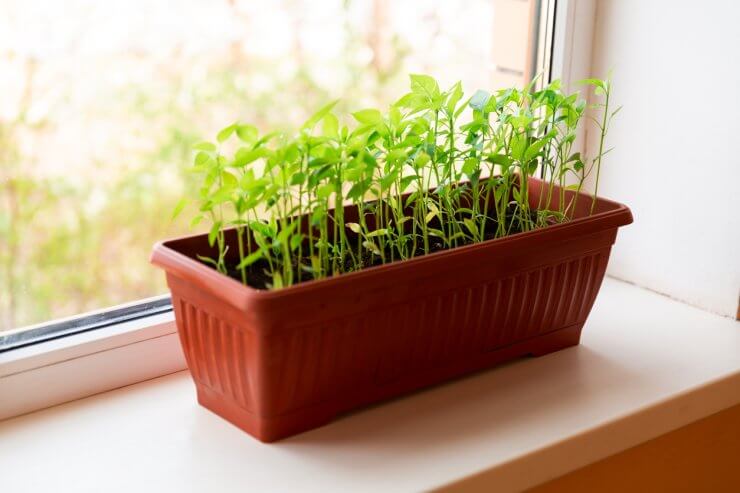When was the last time you gave much thought to your indoor garden temperature? Maybe a little when you’re trying to germinate seeds or get your seedlings off to a good start. Otherwise? I admit it’s not always on the top of my list. But, if I’m comfortable in my home, then my plants must be, too. Right?
Let’s take a walk around my house. I have an older home in New England. Most homes around here have one thermostat that controls temperature, though some places with newer heating systems may have two thermostats for zoned heating and cooling.
While the air temperature around the thermostat is, say, 70, it can be drastically different in other parts of the house. If you’re standing right near the heating vents and the sun is shining, it may well be closer to 80. Head to that back room that doesn’t get any direct sunlight, and I swear the temperature barely cracks 60 some days.
Even the rooms that stay pretty steady can fluctuate some. For example, it can be nice and toasty near the windows when the sun is direct, while it can be somewhat icy in the same spot on a grey day when the wind is howling.
It’s more or less the same story for humidity. That’s a pretty big range for plants, especially if some are more sensitive to temperature. So how do you control humidity and indoor garden temperature?

Keeping it steady: Making indoor garden temperature and humidity perfect for your plants
Since most herbs and vegetables thrive in warm temperatures, it’s often the humidity and winter indoor garden temperature that are issues. Here are a few approaches to helping your plants live in comfort.
Use a thermometer. I can tell you from experience that when you’re coming out of a month of temperatures in the teens and twenties, those 45 degree days can feel pretty good. And while I might be happy about that, it’s still too cold for many fruiting vegetables. A good thermometer can give you an unbiased reading of the actual temperature. And while you’re at it, you might as well buy one that measures humidity, too.
Work with what ya’ got. One workaround to such variation in temperatures is to grow herbs and vegetables that prefer cooler weather. Greens like kale or chard are perfectly happy in cooler conditions. Then as the days get warmer, switch over to those heat-loving veggies.
Heating mats aren’t just for seedlings. Heating mats can help keep the soil and plant roots warm.
Check your filters and vents. In addition to your indoor garden temperature, clean filters and vents in your home’s heating and cooling system will help regulate the temperature throughout your house. Your system will run more efficiently, and you’ll save money. What’s not to love?
Use a portable heater. A small portable heater can serve two purposes. It can help heat a space, of course. But the fan can also help move air around, which can help reduce the chances of moisture build-up on leaves or mold and mildew settling.
Beware of windows. This is a little counterintuitive since many plants need direct sunlight. However, it can get really cold or hot right in front of the windows. Certainly, don’t avoid putting your plants by windows, but be aware of how hot or cold it gets. You may need to add some sheer curtains or move your plants if the environment isn’t right. This is especially true if you have a greenhouse or sunroom, where it can get quite hot on summer days.
What about humidity? If it’s too humid, you’re setting yourself up for mold and mildew problems. But your plants also need some moisture. That’s one reason having a thermometer that measures temperature >and >humidity is helpful.
Humidity may be easier to control than indoor garden temperature. If it’s too humid indoors, the solution could be as simple as opening a window or two. A fan can also help dissipate moisture in the air.
If neither of those options solves the issue, you may need to invest in a dehumidifier.
Alternatively, if you need to add some moisture to the air, humidifiers are inexpensive, and they’ll probably be beneficial for you as well as your plants.
How do you handle the temperature and humidity for your indoor garden? I’d love to read your ideas.


 Previous
Previous

